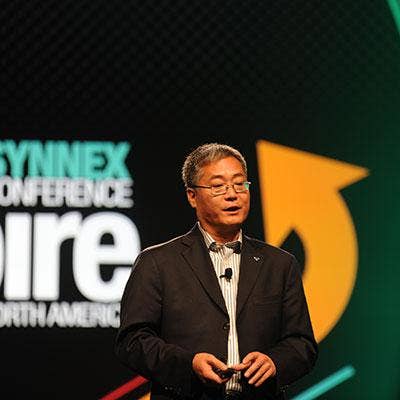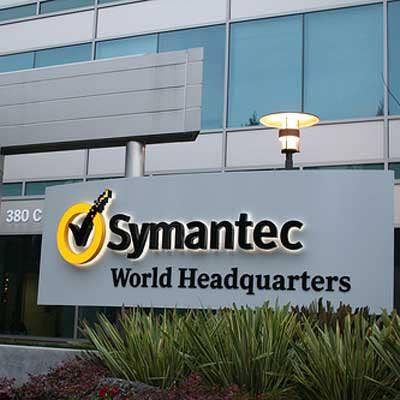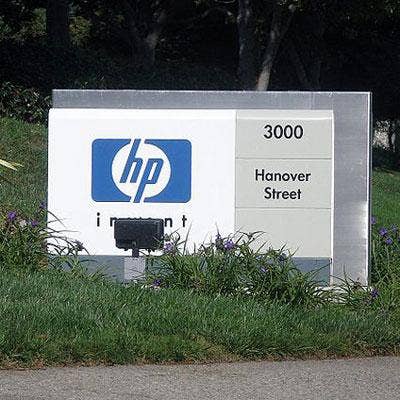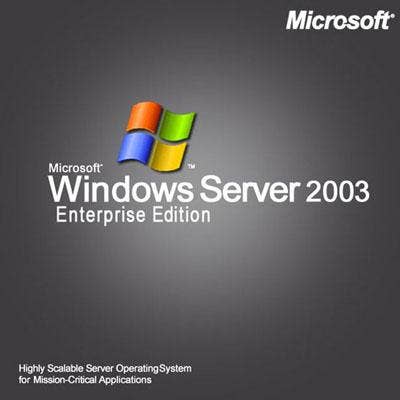Synnex CEO Talks Sales Slowdown, K-12 Dominance, And Impact Of Vendor Splits

Retooling For Higher Growth
Synnex saw its second consecutive quarter of declining revenue, which dropped 2.2 percent to $3.33 billion while non-GAAP profitability also declined 6.6 percent to $58.4 billion.
CRN spoke with Synnex CEO Kevin Murai about why the company's North American technology business isn't growing in line with long-term projections, how the Fremont, Calif.-based distributor's integrated communications practice will benefit from the Symantec split, and why campus Wi-Fi is so in demand right now.
Murai also addressed Server 2003 refresh activity passing its peak, which verticals have already gotten their payment card terminals in compliance with new regulations, and opportunities around enterprise mobility and the Internet of Things.

Is Synnex's continued revenue decline a sign of broader industry challenges?
If you peel back the layers, our core business grew overall in technology solutions. We operate in a number of countries, but in the U.S. our business grew in the mid-single-digit range. In Canada, our business grew in the low single digits. We are growing and probably taking share as well. But the Beats headwind [Beats stopped working with Synnex after it was acquired by Apple] is pretty significant from a year ago, and that's really what caused that year-over-year comparison [with sales falling].

Is low- to mid-single-digit growth the level Synnex expects to be at long term?
We aim for growth well above that level. If you refer back to our analyst day discussion back in July, the multiyear outlook for growth in technology solutions is 6 [percent] to 10 percent. … Japan was a damper on our overall growth for technology solutions. Japan declined 20 percent. A lot of that is driven by the overall market continuing to be soft. The near-term outlook for Japan is that the market will improve, but still, it's negative year over year.

How has Synnex's profitability in North America looked over the past quarter?
Actually, when we net out the expense we had in Japan, which is really a non-market-based issue, we're moving from a multi-employer pension plan to a defined contribution plan. As a result of doing that, there's an expense associated with it, which is one time. But overall, our businesses are extremely healthy. We have growth at our core, and our profitability is stable, and we even had a slight improvement [over this time last year in core business].

Is Synnex continuing to pass on low-margin technology deals?
We're always selective in the business that we take. In terms of the overall marketplace itself, it is a less bit less aggressive today [in terms of companies proposing low-margin deals] than it was three months ago.

How will the Symantec split affect Synnex's relationship with the company?
A big thing behind these splits – both for Symantec and for HP – is to get a much deeper focus on two really different businesses. On integrated communications, security is such a key piece of enablement for cloud and enterprise mobility. We're excited about the changes that Symantec is embarking upon because we do believe they're going to have a much more deep focus on security and information management. I think this plays very well into the integrated communications practice that we have. … Frankly, I think we're going to be even more successful together because of their increased focus. … We're more focused on the security side [of Symantec's business, not the storage side].

What changes have you noticed since HP split internally in August?
First of all, HP has done a terrific job in preparing the entire channel for their impending separation come Nov. 1. HP did separate their systems in early August, and we played a big role in that. We are now dealing electronically with two separate organizations even though they're still today the same level entity. In addition to that, we've been educating on customers on how to deal with HP with two separate programs. Overall, it's gone very, very well, and I expect that as Nov. 1 comes closer, they're going to have a successful split transaction.

Is Synnex seeing more growth in K-12 than its peers?
I believe Synnex is the leader in K-12. We were out there early identifying trends before they became really big. We were first to market with Chrome for Education. We have a significant amount of resource that is dedicated to that market. For us, it goes well beyond just the Chrome device sale. Anybody can sell Chromebook. What we do is put the entire solution together with the hardware on the client side, with the management console and the design around how you effectively program all of that.

What are you doing with OEMs in the K-12 space?
It's the devices as well as the communications business structure. We work with HP and Aruba as well as others in the campus Wi-Fi space like Ruckus to deploy enhanced broadband because once schools decide that they're going to an online solution like Chromebook, in general, what you find is that their campus Wi-Fi isn't sufficient to handle all of the workflow. And then, on the device end, whether it'd be an HP or a Dell or a Lenovo or an Acer or an Asus or a Toshiba, we also include those Chromebook devices as well as those Windows-based devices into the overall solution.

What is Synnex doing in K-12 to set itself apart from the competition?
In addition to that, partnering with Google as well as other ISPs in that ecosystem to be able to be compliant with Common Core. We're doing quite a bit. We have a lot of dedicated resources there. Within education, our resources include four former teachers. What we do beyond everyone else is that we actually help our customers and the end users – our customers' customers – write the requests for funding from state, from federal in being able to deploy technology into the classroom. We're not just selling devices; we're selling full solutions.

Has more Server 2003 upgrade demand materialized after support expired in July?
In the past quarter, yes it did. But I'll tell you that we've probably passed over the peak of that refresh. … It [the refresh] met expectations.

What level of partner interest are you seeing around the payment card liability shift?
We do have a practice in retail point of sale, and we've seen a lot of interest from our point-of-sale folks, customers on getting their customers compliant with EMV. … For us, we're seen good interest in the food service or restaurant market, as well as midsize retail. … These are our VARs that really have a specialty in point of sale, those that understand and are able to explain to their customers what the change in liability is for them. Just like most technology solutions today, the technology itself is secondary to what problem you are trying to solve.

What are the fastest-growing technology areas for Synnex?
There are a number of segments within technology that are experiencing hyper-growth. Anything that is cloud related, mobility related and IoT related, and all of the supporting technologies around that like communications and security – those are all big growth areas. … We've made a number of investments in resources and new business model to really impact where that growth is. … Some are specific to industry verticals like public safety, K-12 education, but in other cases, you're going to see some of the newer businesses, the new communities we've formed. CloudSolv is an example for SMB cloud – not just a platform, but also a community of resellers that are focused on as-a-service consumption.

What's driving growth in integrated communications?
Integrated communications is a business group we have internally. It's collective of networking – core, edge, as well as campus Wi-Fi – but, in addition to that, it's security and it's Voice over IP. Most of those technologies are directly related to the infrastructure for cloud buildout. Being in the right spot, having the right partnerships really is one of the key ingredients of growing. Beyond just the line card, we offer significant expertise in being able to help our partners identify the right products, the right solutions to address specific problems customers might be having.

What about for enterprise mobility?
Our enterprise mobility strategy is really based around the Internet of Things and the whole buildout of machine-to-machine, doing a significant amount of activations. We have a number of carrier partnerships, the leading one we have right now in the U.S. is Verizon. We also have a relationship with AT&T on the wired line side and Comcast for Business. It really drives more of the enabling infrastructure including 3G gateway to enable an IoT enterprise solution.

Is there a desire to bring more telecom carriers into Synnex's fold?
There's certainly a desire to continue to expand our line card there. In any emerging market, part of what we have to do is identify not just who the winners are today, but also the emerging winners moving forward. We've spent a lot of time evaluating different companies in the marketplace and then adding them to our line card as we see appropriate.

What advice do you have for partners?
I'm optimistic about the technology marketplace. There are significant growth opportunities for those partners that take the time to think through where growth is going to happen … and how they can partner with us to add capabilities and take advantage of areas like cloud, like enterprise mobility or the Internet of Things.